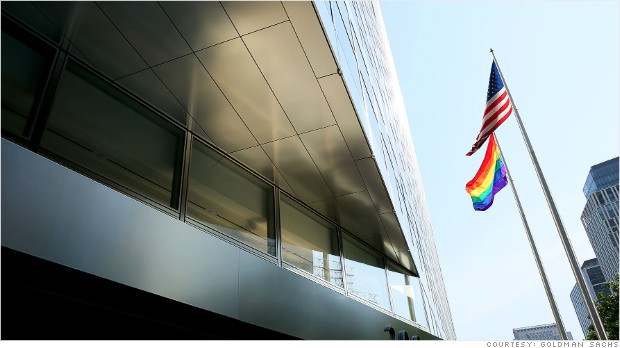Investing these days is like sitting down at a restaurant with a 500-page menu. With so many choices, even the most experienced of investors might feel overwhelmed, however, sometimes simple is better, writes Rob Carrick of The Globe and Mail.
Even savvy investors can be overwhelmed by the number of investment choices available in Canada: 355 exchange-traded funds, 17,517 mutual funds and 1,977 individual stocks, and other securities listed on the Toronto Stock Exchange. You can add another 4,699 stocks, ETFs, and other odds and ends if you add the various listings on the New York Stock Exchange, and still another 2,746 choices on the Nasdaq. More choices are arriving all the time.
The irony here is that a single well-chosen fund may suffice. Consider the one-fund approach if you're a beginner and you don't know where to start and don't have much money, or a busy individual looking for a reliable auto-pilot approach, or an actively engaged investor who wants a simple solution for at least some of your money.
To be worthy of consideration as an investor's single holding, a fund must have low fees, a mix of bonds and stocks, exposure to companies from Canada, the United States, and around the world, and a track record of competitive returns. I recently came up with nine such funds.
Among them are three of the four funds in the Streetwise lineup from the online bank ING Direct, which is owned by Bank of Nova Scotia. A fourth Streetwise fund was left out because it has exposure to stocks only, and no bonds.
Streetwise funds are so simple in construction they may offend experienced investors used to more diversity and complexity. Each is a blend of index funds, tracking bonds, Canadian stocks, US stocks, and international stocks (everywhere but North America). Yes, sensible portfolios can be this simple.
The management expense ratio for Streetwise funds is 1.07%, which is high for a plain vanilla index fund product but acceptable for two reasons. One, the fund has no minimum investment and thus is accessible to all. Two, the holdings of each of the funds are rebalanced automatically.
Each of the three Streetwise funds offers a different mix of stocks and bonds. Rebalancing, often neglected by investors, ensures the funds keep to that blend over time. Without rebalancing, you could gradually find yourself with more stocks or bonds in your portfolio than you want or need.
Consider Streetwise as a good option for beginners with little money to invest. Investors with $5,000 to $25,000 and a desire for simplicity should investigate a handful of other low-cost funds that can be a portfolio unto themselves.
Two possibilities are Mawer Balanced, for registered accounts, and Mawer Tax Effective Balanced, for non-registered accounts. The MER for both is just below 1%, and returns have been very strong and consistent over the years.
Both products are essentially a fund of funds, which is to say their portfolios are built mainly on other funds in the Mawer lineup. Don't worry about extra fees from the underlying funds—you pay only the headline MERs, which in this case are among the lowest in the balanced fund world.
Mawer funds are sold by most online brokers, with RBC Direct Investing a notable exception. You can usually buy the funds with no commissions and a minimum upfront investment of $5,000.
A minimum $5,000 will also get you into Leith Wheeler Balanced if you buy from online brokers. This fund has among the highest fees of any of the names considered here, at 1.17%, but its returns have been competitive and it offers a lower level of volatility than many of its peers in the global equity balanced category.
One more balanced fund to consider is CI Signature High Income (BPIHINCF:CN), which has a low MER by fund industry standards, but is nevertheless the most expensive fund on this list. It's a fairly aggressive fund, but diversified globally and a consistently strong performer in the past.
Balanced funds like this have been monster sellers for the mutual fund industry, but ETF companies haven't had much success with them. The typical ETF is an index-tracking fund that trades like a stock; a very small number of ETFs bundle a group of underlying funds into a fund-of-funds portfolio. Two of these ETF products stand out.
One is the iShares Balanced Income CorePortfolio Fund (CBD:CN), and the other is the iShares Balanced Growth CorePortfolio Fund (CBN:CN). Fees are on the high side for these funds, at 0.89% for CBN:CN and 0.72% for CBD:CN, but you benefit from having iShares maintain a portfolio containing 15-plus underlying ETFs covering sectors, such as the Canadian and foreign stocks, emerging markets, global real estate, gold and preferred shares.
Are these ETFs perhaps diversified to the point of silliness, with some holdings accounting for just 0.5% of the portfolio? Possibly, but the concept seems to be working. CBD:CN has been a steady performer for five years, and CBN:CN has been coming on strong in the past three years.
If you're going to make frequent additions to your holdings in one of these ETFs, consider using an online brokerage, such as Questrade or Virtual Brokers, that waives ETF purchase commissions (National Bank Direct Brokerage has waived ETF commissions until October 31). Qtrade Investor and Scotia iTrade have a limited selection of commission-free ETFs.
Back in the mutual fund world, you'll find a surfeit of both balanced funds and a similar one-fund product called a wrap, or, in marketing lingo, a portfolio solution. Most wraps are overpriced and undistinguished: Avoid them, they put marketing ahead of sound financial management.
Sadly, this advice applies to wraps in the same family as the highly regarded TD e-series of index mutual funds. Individual e-series funds are available only online through TD Asset Management or the discount broker TD Direct Investing, and they're ideal for beginners and people who want to gradually build portfolios with minimal wastage on fees and commissions.
There are five e-series wraps offering various levels of risk and the convenience of rebalancing. The fees seem high, though. An example is TD Managed Index Balanced Growth - e, with an MER of 1.29%.
If you manually assembled the same portfolio as TD Managed Index Balanced Growth using individual e-series index funds, your fees would be more than halved.
Single-fund convenience is great, but sometimes—as in this case—it pays to do the portfolio-building yourself.
For more personal finance coverage, follow Rob Carrick on Twitter (@rcarrick) and Facebook (robcarrickfinance).
Read more of Portfolio Strategy here…

 Popular Posts: 5 Oil and Gas Stocks to Buy Now17 Oil and Gas Stocks to Sell Now9 Biotechnology Stocks to Buy Now Recent Posts: 9 “Triple A” Stocks to Buy 16 Oil and Gas Stocks to Sell Now 7 Machinery Stocks to Buy Now View All Posts
Popular Posts: 5 Oil and Gas Stocks to Buy Now17 Oil and Gas Stocks to Sell Now9 Biotechnology Stocks to Buy Now Recent Posts: 9 “Triple A” Stocks to Buy 16 Oil and Gas Stocks to Sell Now 7 Machinery Stocks to Buy Now View All Posts 

 ) announced its Q4 and full-year earnings before the bell on Thursday, with quarterly earnings coming in much lower than the same period last year.
) announced its Q4 and full-year earnings before the bell on Thursday, with quarterly earnings coming in much lower than the same period last year. Here's the Problem One reason why Russ' target fund has disappointed this year is because these funds follow an easy-to-understand formula called the "rule of 100."
Here's the Problem One reason why Russ' target fund has disappointed this year is because these funds follow an easy-to-understand formula called the "rule of 100." 

 Bloomberg News
Bloomberg News 
 Bloomberg News
Bloomberg News  Snapshot of the Mt. Gox Bitcoin tracker, chronicling the currency's rise. Source: Mt. Gox
Snapshot of the Mt. Gox Bitcoin tracker, chronicling the currency's rise. Source: Mt. Gox 
